Allergy Medication Selector
Find the best allergy medication for you
Answer these questions to get personalized recommendations based on your symptoms and priorities.
Your Recommended Allergy Medication
Quick Takeaways
- Claritin (loratadine) offers 24‑hour relief with minimal sedation.
- Zyrtec (cetirizine) works faster but may cause mild drowsiness.
- Allegra (fexofenadine) is non‑sedating and works well for nasal congestion.
- Benadryl (diphenhydramine) is cheap and fast‑acting but makes you sleepy.
- Natural options like quercetin provide modest relief without prescription.
When it comes to battling seasonal allergies, Claritin is a brand name for loratadine, a second‑generation antihistamine that blocks histamine H1 receptors without causing drowsiness. It’s a go‑to for many because you can take it once a day and stay clear‑headed. But the market is crowded with alternatives-some over‑the‑counter, some natural. This guide lines up the major players, digs into how they work, and helps you decide which pill fits your lifestyle and budget.
How Claritin (Loratadine) Works
Loratadine belongs to the second‑generation antihistamine class. After you swallow a 10 mg tablet, it’s absorbed in the gut and reaches peak blood levels in about 1-3 hours. It binds selectively to the histamine H1 receptor, preventing histamine from triggering the classic allergy symptoms: itchy eyes, runny nose, and sneezing. Because it penetrates the brain only minimally, the sedation risk is under 5 % in clinical trials (FDA, 2023). Its half‑life of roughly 8 hours lets it protect you for a full day, making it ideal for work or school.
Comparing Popular Antihistamines
| Medication | Active Ingredient | Onset of Relief | Duration | Sedation Risk | Typical OTC Price (USD) |
|---|---|---|---|---|---|
| Claritin | Loratadine | 1-3 h | 24 h | Low (≈2 %) | $12‑$15 (30 tablets) |
| Zyrtec | Cetirizine | ~30 min | 24 h | Moderate (≈10 %) | $10‑$13 (30 tablets) |
| Allegra | Fexofenadine | ~1 h | 12‑24 h | Very low (<1 %) | $14‑$18 (30 tablets) |
| Benadryl | Diphenhydramine | 15‑30 min | 4‑6 h | High (≈50 %) | $5‑$8 (100 tablets) |
Each drug blocks the same histamine H1 receptor, but their chemical structures affect how quickly they act, how long they stay in the system, and how much they cross the blood‑brain barrier. Below we break down the practical impact of those differences.
Efficacy & Onset Time
Clinical studies consistently rank cetirizine (Zyrtec) as the fastest‑acting oral antihistamine, delivering noticeable relief within 30 minutes for about 85 % of users. Loratadine (Claritin) is a bit slower, with most patients reporting improvement after 1-2 hours, but still maintains 90‑95 % efficacy for sneezing and nasal discharge. Fexofenadine (Allegra) lands in the middle, usually kicking in around the one‑hour mark. Diphenhydramine (Benadryl) is the quickest-often within 15 minutes-but its effect fades after 4‑6 hours, prompting multiple doses for all‑day coverage.
Side‑Effect Profile & Sedation Risk
First‑generation antihistamines like diphenhydramine were the original allergy pills, but they also bind to central nervous system receptors, causing the classic “sleepy” feeling. That’s why Benadryl is preferred for nighttime or short‑term flare‑ups, not for daily use.
Second‑generation agents (loratadine, cetirizine, fexofenadine) were engineered to stay out of the brain, cutting sedation to single‑digit percentages. Still, cetirizine shows a slightly higher drowsiness rate-about 10 %-which can matter for drivers or students. Fexofenadine boasts the lowest sedation risk, making it a safe pick for people who need clear focus.
Cost, Insurance & Availability
All four medications are available over the counter in the United States. Prices fluctuate with generic availability. Generic loratadine and cetirizine usually sit under $10 for a month’s supply, while fexofenadine remains the priciest due to patent extensions that expired only recently (2024). Benadryl is the cheapest, often under $5 for 100 tablets, but you may need to buy more because of its short duration.
Most private insurers cover the generic forms of loratadine, cetirizine, and fexofenadine when prescribed, but over‑the‑counter purchases are out‑of‑pocket. If you have a high‑deductible plan, the cheaper Benadryl might look attractive, but remember the trade‑off in alertness.
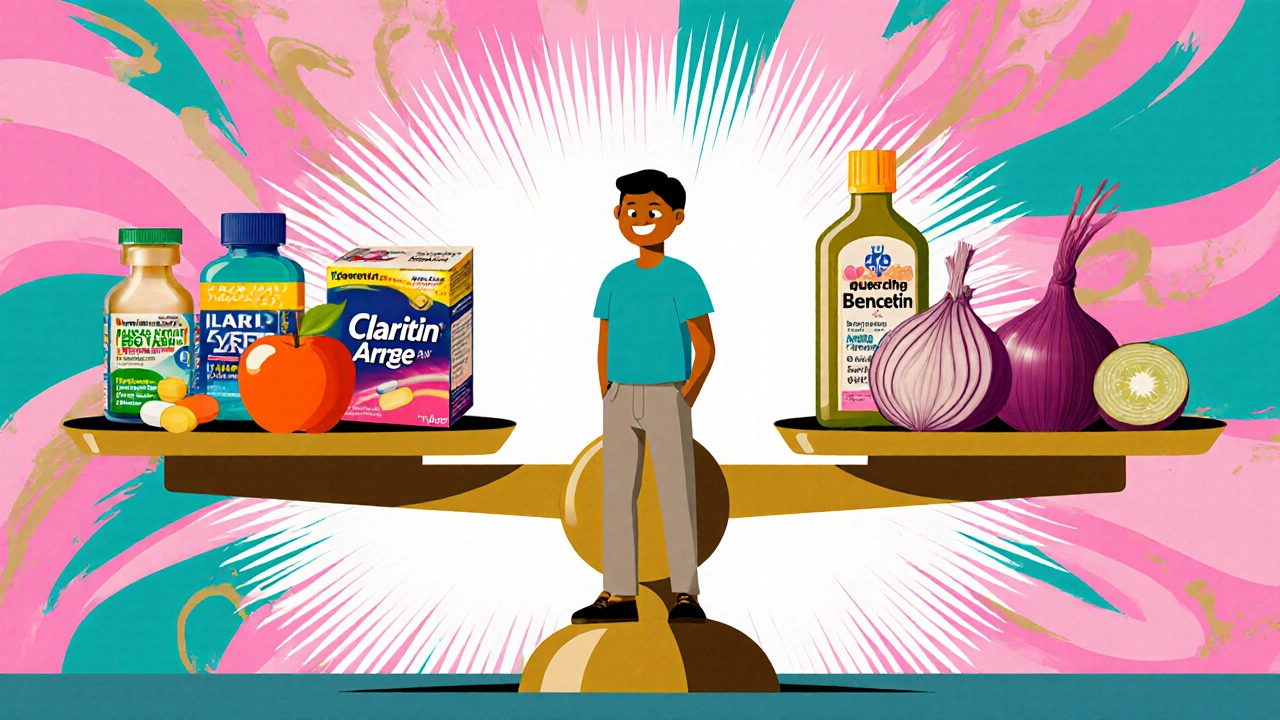
Choosing the Right Option for Your Symptoms
Here’s a quick way to match a drug to a situation:
- All‑day work or school: Choose Claritin or Allegra for non‑sedating 24‑hour relief.
- Need fast relief for a sudden flare‑up: Reach for Benadryl (if you can tolerate sleepiness) or Zyrtec for quicker onset.
- Both nasal congestion and itchy eyes: Claritin handles both well; Allegra excels at nasal symptoms.
- Budget‑tight: Generic loratadine and cetirizine are inexpensive; Benadryl is cheapest but may require multiple doses.
- Prefer a natural route: Quercetin (a flavonoid found in apples and onions) shows modest antihistamine activity in small trials, but it won’t match prescription‑strength relief.
Quick Decision Checklist
- Do you need **non‑sedating** relief? → Claritin, Allegra, or generic loratadine.
- Is **speed** your priority? → Zyrtec or Benadryl.
- Is **cost** the main driver? → Generic loratadine, generic cetirizine, or Benadryl.
- Do you have **specific health concerns** (e.g., liver disease, pregnancy)? → Check each drug’s label; loratadine is generally safe in pregnancy (Category B).
- Do you prefer **natural supplements**? → Consider quercetin or bromelain, but keep expectations realistic.
Frequently Asked Questions
Can I take Claritin and Zyrtec together?
No. Both drugs block the same histamine H1 receptors, so taking them together won’t boost effectiveness and may increase side‑effects like headache.
How long does it take for Claritin to start working?
Most adults feel relief within 1‑2 hours, with peak effect around 3 hours after the dose.
Is Claritin safe for children?
Yes, a pediatric formulation (5 mg chewable) is approved for kids 2 years and older. Dosage is weight‑based.
Can I use Claritin for hives (urticaria)?
Loratadine is FDA‑approved for chronic idiopathic urticaria, so it works for hives as well as nasal allergy.
What natural ingredient rivals antihistamines?
Quercetin, a flavonoid found in apples, onions and berries, has modest antihistamine activity. Studies show a 20‑30 % reduction in histamine release, but you’ll still likely need a conventional antihistamine for severe symptoms.

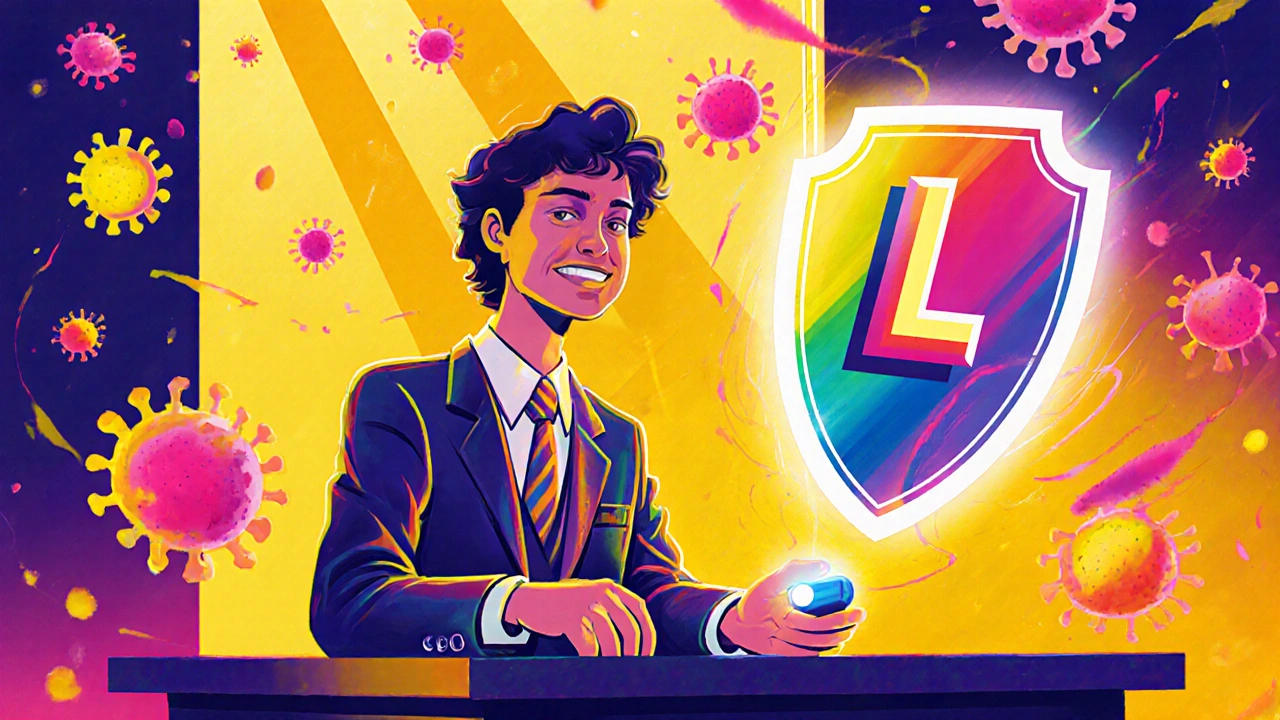

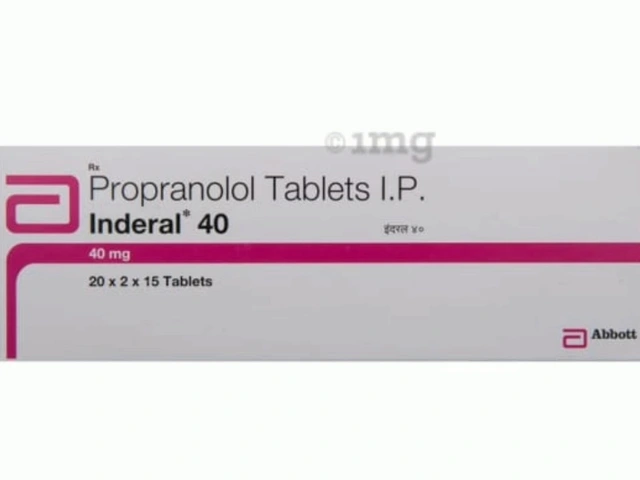
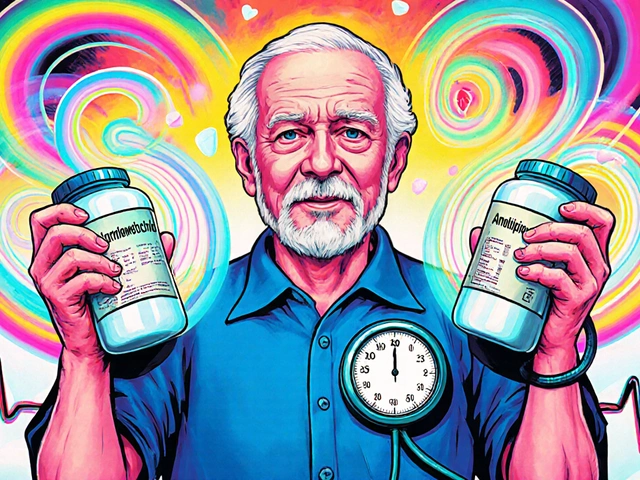


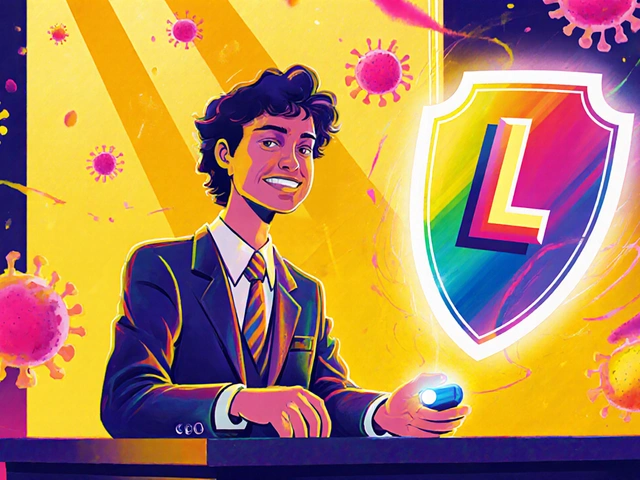
October 20, 2025 AT 19:08
laura wood
Reading through the comparison really highlights how many options we have for tackling seasonal sniffles. I appreciate the clear breakdown of onset times and sedation risks – it makes choosing the right pill less overwhelming. For anyone who gets a runny nose at the slightest pollen, the 24‑hour coverage of Claritin is a comforting choice. It’s also nice to see the price points listed so we can weigh cost against convenience.
October 29, 2025 AT 02:06
Kate McKay
Everyone’s body reacts differently, so keep an eye on how you feel after the first dose and adjust accordingly. Remember, staying consistent with the same medication often yields the best results for long‑term relief.
November 6, 2025 AT 10:06
Demetri Huyler
As an American we’re fortunate to have a marketplace flooded with generics that keep our wallets light while the Brits still wrestle with prescription hoops. Claritin, Zyrtec, and Allegra each have their niche, but the home‑grown convenience of over‑the‑counter access sets us apart from other nations. No need to import exotic herbal teas when a single tablet does the job.
November 14, 2025 AT 18:06
JessicaAnn Sutton
The pharmacological profile of loratadine distinguishes it from first‑generation antihistamines in several clinically relevant ways. Its selective antagonism of peripheral H1 receptors minimizes central nervous system penetration, thereby reducing the incidence of drowsiness. This pharmacokinetic property is supported by multiple double‑blind studies that reported somnolence rates below three percent. In contrast, cetirizine demonstrates a modest increase in sedation, with approximately ten percent of participants noting mild sleepiness. Fexofenadine, while also non‑sedating, exhibits a shorter half‑life that may necessitate twice‑daily dosing for optimal control of nasal congestion. From a cost perspective, loratadine occupies a middle ground, being slightly more expensive than generic diphenhydramine yet comparable to other second‑generation agents. The ethical implications of pharmaceutical pricing warrant scrutiny, especially when marginal cost differences influence patient adherence. It is incumbent upon clinicians to discuss these financial considerations openly with their patients. Moreover, the environmental impact of manufacturing synthetic antihistamines should not be ignored, as production processes contribute to carbon emissions. Patients seeking natural alternatives might consider quercetin, though current evidence suggests only modest efficacy. The variability in individual metabolism further complicates a one‑size‑fits‑all recommendation, reinforcing the need for personalized medicine. Genetic polymorphisms affecting CYP3A4 activity can alter loratadine clearance, potentially requiring dosage adjustments. While most users experience satisfactory relief, a small subset reports persistent rhinorrhea despite adherence, indicating a possible refractory phenotype. In such cases, clinicians may explore adjunctive intranasal corticosteroids or allergen immunotherapy. Ultimately, the decision matrix incorporates efficacy, sedation risk, duration of action, cost, and patient preference. By weighing these factors judiciously, individuals can align their treatment choice with both clinical and personal values.
November 23, 2025 AT 02:06
Deja Scott
I respect the thorough analysis and will consider the cost‑benefit balance when selecting my next antihistamine.
December 1, 2025 AT 10:06
Andrew Hernandez
Claritin works well for most people it offers a full day of relief without making you sleepy
December 9, 2025 AT 18:06
barnabas jacob
The pharmacodynamic pathway of loratadine is quite robust but many folks overlook the suboptimal side‑effect profile of diphenhydramine you gotta consider the risk‑benefit ratio before self‑medicating. Also, the big pharma narrative pushes cheap sedatives while ignoring long‑term cognitive impacts. It’s a shame the market still tolerates such lazy commodity drug strategies.
December 18, 2025 AT 02:06
jessie cole
It is my solemn duty to advise that adherence to the prescribed regimen shall ensure optimal therapeutic outcomes.